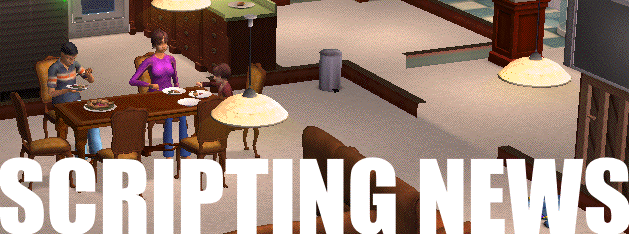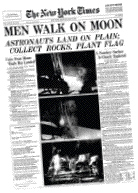
 Domain-mapping is as nice as I hoped
Domain-mapping is as nice as I hoped 
 I've wanted to use the Internet's domain name system as a way to bookmark sections of outlines, feeds, maybe even smaller more atomic things.
I've wanted to use the Internet's domain name system as a way to bookmark sections of outlines, feeds, maybe even smaller more atomic things.
I think a domain name should be an easy, almost casual thing to allocate. Like the dialog that pops up when you Save a file for the first time.
A domain name should be like a file name. That easy. It's kind of amazing that the Internet has gotten this far without anyone trying to simplify such a central concept.
It feels like another idea, from 1999, called Edit this Page. "Writing for the web is too damned hard," it began -- and then explained how we had simplified it. That piece was seminal. It led to the software that led to blogging. It all happened very fast after that.
Now the question is how to put together all the pieces we've created since then. Feeds, outlines, status messages, social networks, photos, videos. Taking complex things, bundling them and giving them simple names. Then doing more combining, relating and bundling.
So I was working on domain-mapping for the world outline. I want to be able to give a name to a node in an outline. Then you can jump to that name in your web browser, where you see just that node and its subordinate material. Very simple. But giving it a name, that was still a matter of going to the domain registrar and wading through a complex set of dialogs.
Today, the innovation was that I was able to enter the name in a dialog and the software took care of all the michegas, quickly. Save the outline and a second later view the new domain in my browser. Bing!
To experiment we used a fun domain I had lying around, not doing very much.
I plugged my photo archive into it, and then gave April 30, 2011 a special name:
Damned if it all doesn't work! Just like that.
It's hard to show how that was simplified. Here's another address that gets you to the same place. The content is the same, but the context is way different.
We have more work to do. I want to hook this up to dnsimple, they have a nice API, and they reached out to us early-on.
We have to hook it up to RSS too. And then there are a lot of new concepts to explore. We now have a way of talking about sub-outlines without paths (and the linkrot they inevitably cause).
 Mississippi River heading into Atchafalaya
Mississippi River heading into Atchafalaya 
At the suggestion of Doc Searls last year I read a book by John McPhee about the changes coming to the Mississippi River.
Seems the changes he was talking about could be happening now.
McPhee wrote a long New Yorker article that's a short version of the book. Contains the basic info you need to understand the drama.
The Times reports today that the Army Corps is will open the spillway at 3:30PM Eastern with live video.
Here's a great Google Maps view of the spillway. Try looking at it in street view! Fascinating.
The spillway has been opened only once before, in 1973.
 Here's the scoop. Every thousand years or so the Mississippi River changes course radically, and starts building a new piece of the delta. Physics causes this. The water is always seeking the shortest and fastest route to sea level, the Gulf of Mexico. Over time the river deposits silt that it has to flow over, causing the route to be longer and slower. Eventually in a spring flood it rises over one of its upstream banks and digs a new channel and flows in a different direction.
Here's the scoop. Every thousand years or so the Mississippi River changes course radically, and starts building a new piece of the delta. Physics causes this. The water is always seeking the shortest and fastest route to sea level, the Gulf of Mexico. Over time the river deposits silt that it has to flow over, causing the route to be longer and slower. Eventually in a spring flood it rises over one of its upstream banks and digs a new channel and flows in a different direction.
Well, the most recent milennium was over around 1950 or so. Since then the US Army Corps of Engineers has been at war with the river, trying to keep it flowing past Baton Rouge and New Orleans, and all the industry that's built up around the cities. And away from places where people live now, that would be underwater if the river changed course.
The Army's position is that it can't lose this war or the US economy will be severely disrupted. But a lot of people believe it's inevitable that the river will eventually win.
This year's flood may be the moment. If the river tops the levees in the place the river is trying to shift direction, it's going to be super-hard if not impossible to get it back into its current banks.
What times we live in! ![]()
 Twitter-only reporters? Yes, of course
Twitter-only reporters? Yes, of course 
Lauren Dugan asks if we'll see Twitter-only reporters soon?
And the answer is yes, we will -- of course.
If we don't already have them something is wrong.
Last year I was looking out my window on Bleecker St in the West Village and saw a huge plume of smoke off in the distance. Within five minutes, through Twitter, I knew exactly where the fire was, and had seen pictures taken by people on the scene.
People working at a local TV station couldn't possibly have gotten a reporter and camera there that fast.
 This prophecy goes all the way back, for me, to Salon boasting that they were the first web-only news organization to send a reporter to Bosnia. Big deal, I thought at the time (and wrote) -- the web is not only in Bosnia but in every other place where news is happening. The days when we had to send a correspondent to the scene to cover a story are fading fast. The Internet reaches everywhere.
This prophecy goes all the way back, for me, to Salon boasting that they were the first web-only news organization to send a reporter to Bosnia. Big deal, I thought at the time (and wrote) -- the web is not only in Bosnia but in every other place where news is happening. The days when we had to send a correspondent to the scene to cover a story are fading fast. The Internet reaches everywhere.
I'm not saying there isn't something to be gained from going to new places and reporting on them with fresh eyes -- there is. Seeing Queensday for the first time at age 55 creates a different impression from that of people who grew up in Netherlands. Perspective is important. Having someone who's like me observing on my behalf has value. With the caveat that it isn't often that the commercial news vendors actually do that.
Next question! ![]()
 Downloading my videos from Flickr
Downloading my videos from Flickr 
I'm working on getting my Flickr pictures to flow to an S3 bucket via their API.
It's all been working pretty well until I realized I needed to check on the videos, and see if I needed to do something special with them.
Most of my Flickr uploads have been JPGs, but there are a few MP4s.
Near as I can tell, there is no way to actually download the videos. I could of course be missing something.
PS: It seems from this thread there was at one time a way to do it. Also on the Flickr developer blog.
 Does this exist? Easy-Linux-EC2
Does this exist? Easy-Linux-EC2 
I don't have a specific need for this right now, just wondering if it exists.
1. A machine image for Amazon EC2.
2. A flavor of Linux, with basic server stuff running (Apache, FTP).
3. Pre-installed graphic user interface shell.
Anticipating that people will say I can install whatever shell I want: I know that. I'm interested in something that competes with Windows on S3 without Windows. And if this doesn't exist, it should. ![]()



